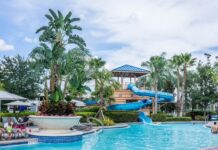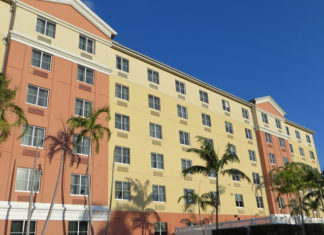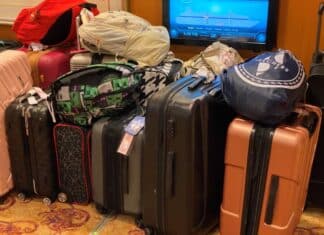When it comes to waterparks, Orlando is the world’s mecca. Within just a few square miles are major parks hailed as some of the best on the planet. But by far the most eye-catching is Universal’s Volcano Bay. Sitting next to Interstate 4, the park’s centerpiece is a towering man-made volcano that can be seen from miles around.
Along with being one of the most impressive waterparks in Orlando, Volcano Bay is also among the most expensive. A single-day ticket reaches $80 for adults. That’s a big investment considering you could visit another waterpark like SeaWorld’s Aquatica for about half that.
So is Volcano Bay worth it? We recently visited the park to give you dozens of tips and things to know, including if we think you should spend your money.
In This Article...
Overview of Volcano Bay
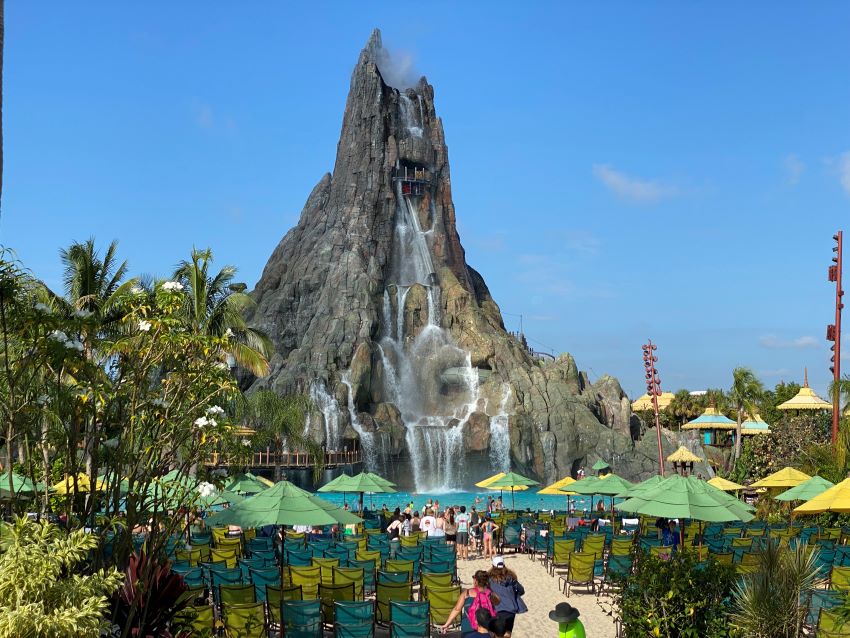
If you’ve never visited before, Volcano Bay can be overwhelming. The park first opened in 2017 and covers 27 acres in the middle of Orlando. Inside the park, it’s a complete Polynesian-themed land with nearly 20 different water attractions that range everything from calm pools to some of the most extreme waterslides on the planet.
This is all set in lush surroundings that include winding paths surrounded by thick foliage and flowers. That helps to make the park feel more intimate given its size. As well, it helps to set the park apart from the busy surroundings including being right next to the interstate (but you’d never know once in the gates).
In addition to the water attractions, there is everything that you need to enjoy the day. From lockers for rent to multiple eateries to loungers, and even bars, there’s been a lot of thought put into making sure that guests have plenty to do, but are also comfortable.
Getting to & Around Volcano Bay
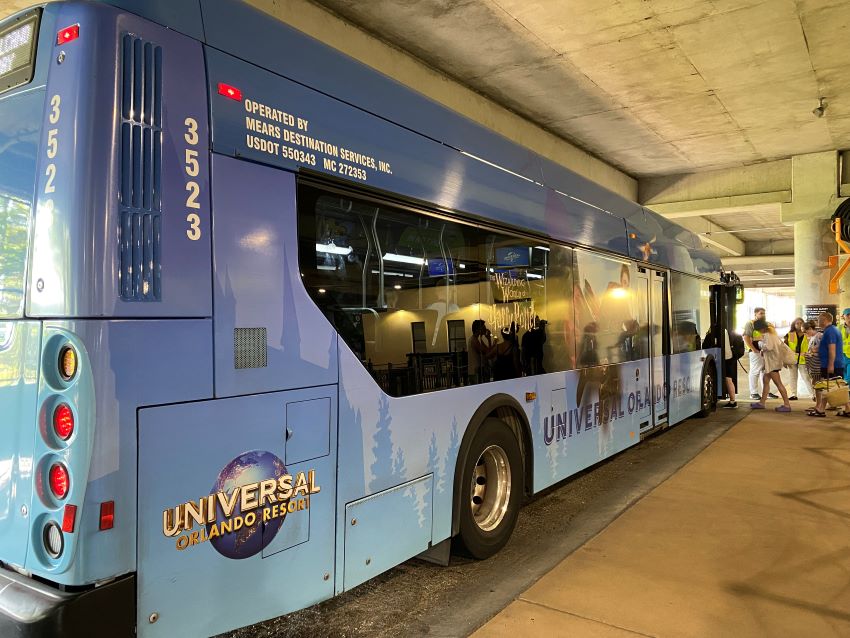
Unlike most theme parks you might visit, it’s actually a bit of a chore to get to Volcano Bay. Nestled in a corner of the busy Universal Studios, it’s surrounded by the freeway on one side, a large road on another, and then a major hotel to the north. That means there is no parking available at the park.
Instead, guests park at the Universal parking garage ($30 a day). They then go through a quick security check with metal detectors and board a free shuttle to the park entrance. The ride over takes only about five minutes. Then you’re let out and it’s another few minutes to walk to the entrance gate where you’re given your Tapu Tapu (more on this in a moment) and head into the fun.
As for getting around the park itself, that’s done by walking. While the park is large, there isn’t a tram or any other transportation method. Instead, you’ll need to hoof it. You do have the option of hopping in one of two circular river rides and getting out in another section, but it’s not really a transportation system.
Volcano Bay Rides & Attractions
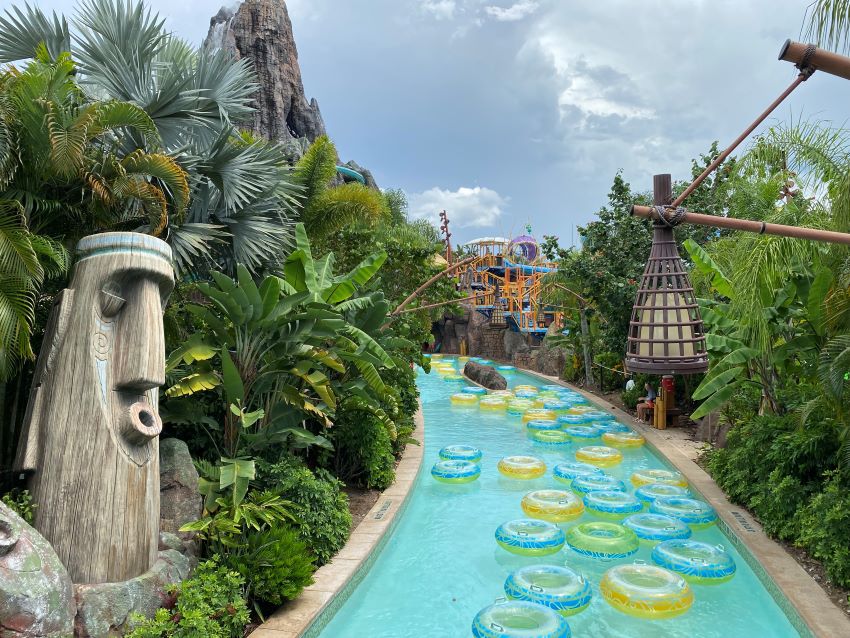
Speaking of rides, what can you expect at the park? Officially, the park lists around 20 different ways to get wet, including everything from extreme slides all the way to chilled out spots for little kids to splash.
However, some of those rides include two different slides that we think you can consider two slightly different versions of the same ride.
Below we cover the rides, including height minimums and some details. One thing you should know is that every ride in the park uses Polynesian-themed names. That makes it easy to get confused on which slide is which and also makes it hard to remember the name. Don’t be surprised if you just start calling things names like “the green raft ride” to keep in straight during your visit.
Kala and Tai Nui Serpentine Body Slides (Extreme) — Two slides at the top of the volcano that feature a falling floor sending you plunging below. | 48″ minimum, 300 lb maximum
Ko’okiri Body Plunge (Extreme) — One other drop-door slide at the top of the volcano that is similar to Kala and Tai Nui, except it sends you a different direction and through a clear tube below a pool. | 48″ minimum, 300 lb maximum
Ohyah & Ohno Drop Slides (Extreme) — Slides that spin you around and drop you 4-6 feet into a pool of water at the end. | 48″ minimum
Puka Uli Lagoon (Calm) — Family pool with lots of splashing water to keep the little ones entertained.
Maku Puihi Round Raft Rides (Moderate/Extreme)* — Two raft rides that seat up to five (but you can ride with as few as two) that send you down a slide, complete with rides up the wall. Maku (yellow slide) is less intense than Puihi (green slide). | 42″ minimum
TeAwa The Fearless River (Moderate/Extreme)* — One of two continuous rivers through the park you can ride anytime. This is the more active of the two, with a strong current and occasional waves. All riders will require a lifejacket before entering. | 42″ minimum
Hammerhead Beach (Calm) — Beach with loungers and a gradual slope into the water. It also serves as an entrance to TeAwa
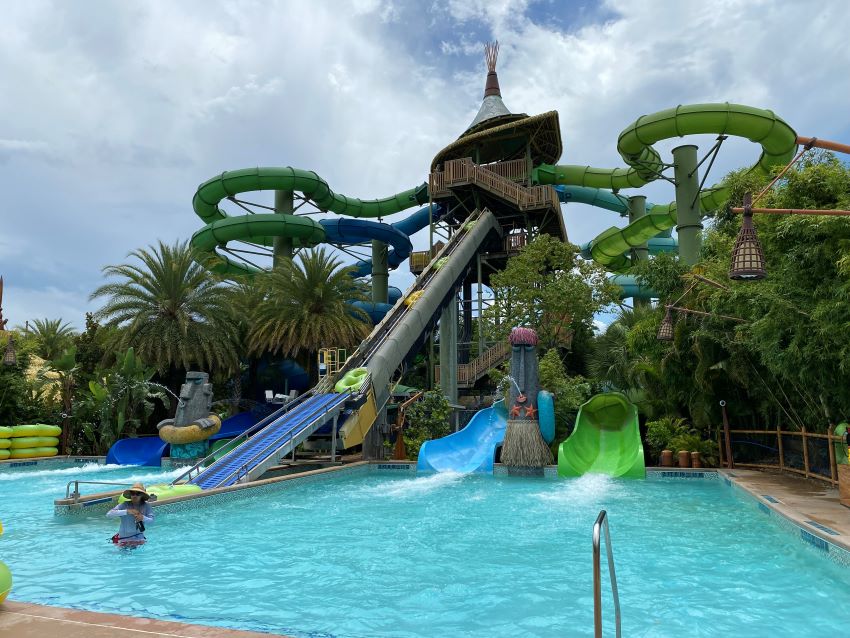
Taniwha Tubes (Moderate) — Double one or two-person tube slides that send you looping back and forth. These are less intense than the larger five-person raft rides in the park. | 42″ minimum
Punga Racers (Moderate) — Four classic waterslides that allow you to race down to see who is crowned the fastest. | 42″ minimum, 300 lb maximum
Krakatau Aqua Coaster (Moderate)* — While not the most extreme ride in the park, the Krakatau coaster is by far the most popular. Here, you sit in a four-person “canoe” that sends you down drops before shooting you back uphill via powerful water jets. | 42″ minimum, 700 lb maximum (for four people)
Runamukka Reef (Calm) — One of the children’s play areas with small slides, splash areas, and much more.
Tot Tiki Reef (Calm) — Designed for toddlers and smaller kids than the Runamukka Reef.
Kopiko Wai Winding River (Calm) — The second of two continuous rivers in the park, this one is much more relaxed than TeAwa. Here, you sit on a tube and float along the river making it ideal for those who want to chill out more.
Honu Ika Moana (Moderate/Extreme)* — The second of two sets of family raft slides seating up to five people at once. Ika Moana (green slide) is the less intense of the two and allows kids 42″ to ride. Honu (blue slide) is more extreme, sending riders up a vertical wall and requires 48″ height to ride. | 42″-48″ minimum
The Reef (Calm) — A relaxing pool just beside the volcano that’s typically less crowded than the larger wave pool next to it.
Waturi Beach (Calm) — The large beach with loungers and enormous pool that goes between being calm and having waves generated. By far the largest body of water in the park.
*indicates a ride that was one of our favorites in the park.
Tips & Things to Know About Volcano Bay
So what do you need to know before you visit to prepare for the day? Here are some of our best tips and helpful info.
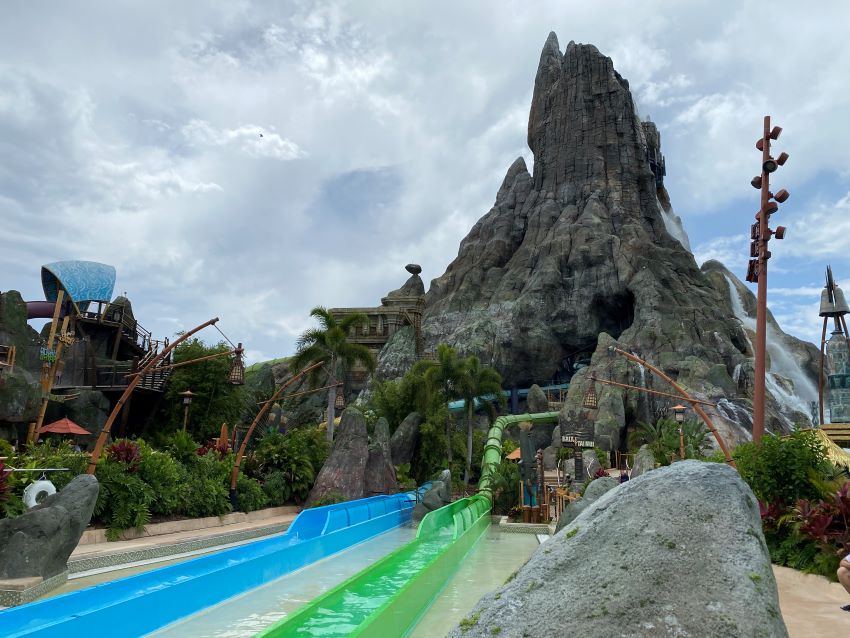
The Park Starts to Fill Up Around 11 a.m.
Want to have the shortest lines and smallest crowds? Arrive early in the morning. During a recent visit, we arrived in the park right at the 9 a.m. opening on a summer weekday. Crowds were minimal and most rides had no wait. It wasn’t until about 11 a.m. that we noticed Volcano Bay started to fill up and subsequently more wait times around the park.
Yes, Bring Your Own Towel
What about drying off when you’re out of the water? You’ll want to bring your own towel. There are towels for sale in the gift shops or you can rent one, but it’s pricey. Instead, just bring a beach towel from home when you visit.
Head to the Back of the Park to Set up “Home Base”
Unless you rent a cabana, you’re going to need one of the widely available loungers spread around the park to serve as your home during your day at the park. As well, you might want a locker to store any valuables. These stations are located at various spots around the park as well.
Our suggestion is to head toward the back of the park. When you first arrive, you’ll find lots of spots — especially near the entrance at the main “beach” in front of the volcano. But since this is so visible, the area can get busy. It’s much quieter at the back of the park.
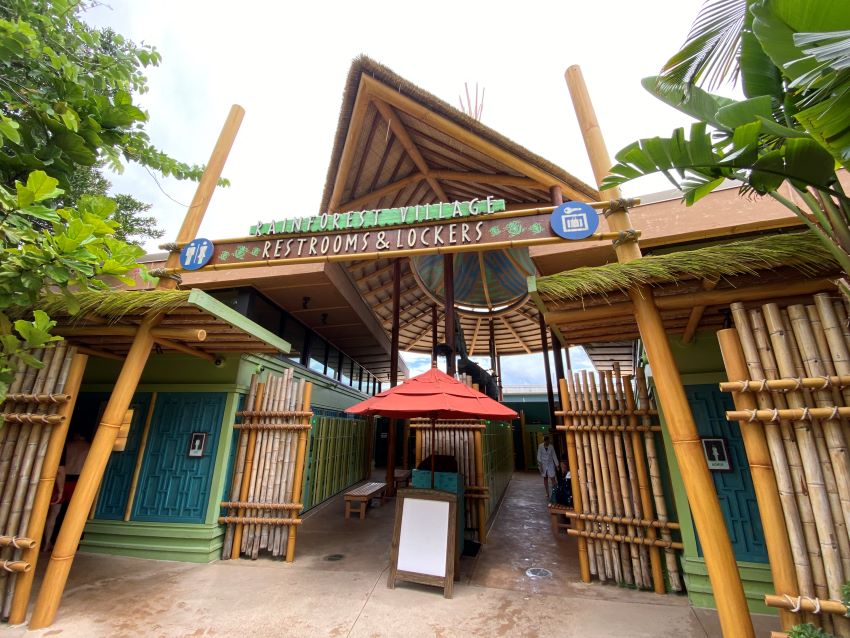
Lockers Are Available to Rent
So what do you do with your valuables while you’re out riding slides? You could leave them by a lounge chair, but a locker is probably a better idea. That way they are protected not just from theft, but also from Florida thunderstorms that may drench things.
There are locker stations around the park and prices range from $10-$20 depending on the size. You can open and re-open them as much as you want throughout the day.
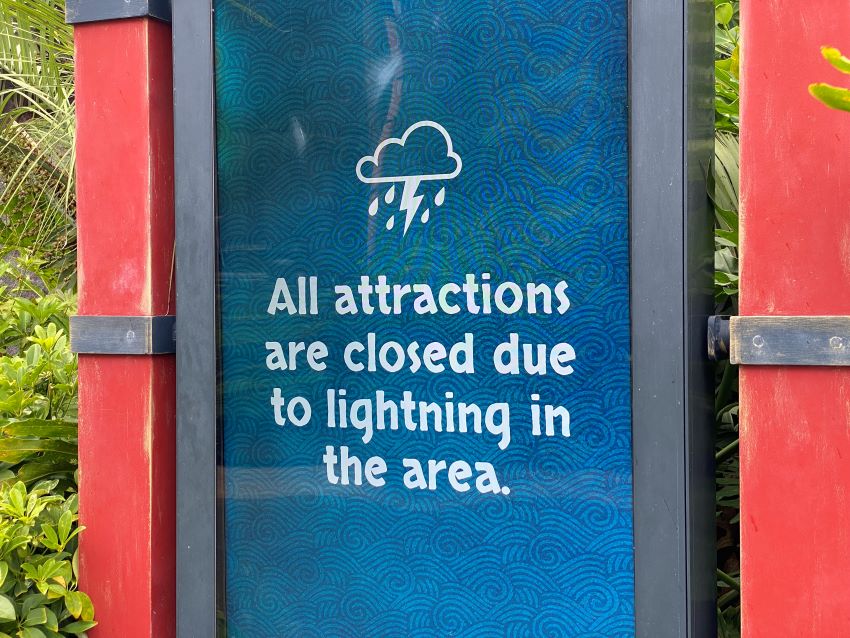
Lightning Can Close the Park Down for a Period
Florida is known as the lightning capital of the world. It’s common for passing thunderstorms in the afternoon to bring heavy rain, thunder, and lightning… and then be gone 20 minutes later.
Know that if there is lightning, the park will shut down. Lifeguards will order everyone out of the water, and it’s up to you to find a spot to stay dry (you don’t have to leave the park). Once the threat clears, Rides start to re-open. Depending on how late in the day the pause is, you might find fewer people in the park afterward.
Volcano Bay Is Hard to Navigate
If you’re visiting Volcano Bay for the first time, expect to find it difficult to make your way around. Universal put a lot of effort into making the park feel “cozy” with winding paths and lots of foliage. It does the trick, but also makes it hard to know exactly where you’re going.
Ride entrances are sometimes relatively hidden, and there aren’t many maps around (though there are a lot of signposts pointing the direction of rides). As well, the two sides of the park have some of the same landmarks — such as a bridge over a lazy river — that look almost identical, leading to confusion.
The best advice is to know that the main path through the park makes a big loop around the park. If you stay on it, you’ll eventually find what you’re looking for.
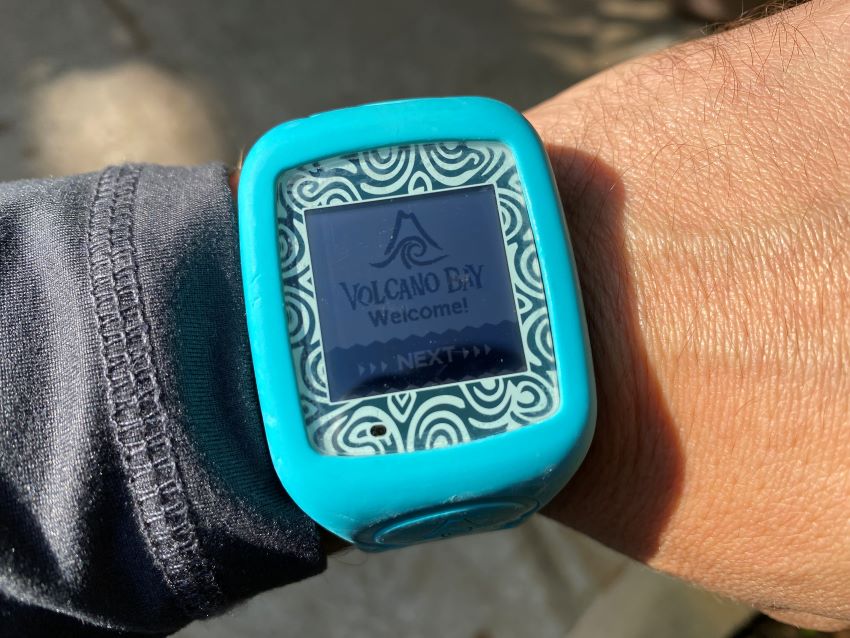
Everyone Gets a Tapu Tapu… Here’s What to Know
When you arrive at the park, you’ll be given a “Tapu Tapu.” Everyone will get one, even the kids. The device looks like a waterproof smartwatch, with a rubber strap and a simple screen that displays messages.
You use this around the park for various things (including paying for items), but the biggest use is for getting in virtual line for rides. Whenever you go to a ride, you’ll tap the watch against a reader. If there is a wait for the ride, then tapping the watch against the kiosk places you in the queue. You’re then free to go elsewhere and have fun while you wait. It will then always tell you how long the wait is until it’s time to return to ride.
If you use the Tapu Tapu to get in another line, you’ll lose your spot in the original queue. However, you can ride anything else that says “Ride Now” or “Ride Anytime” without losing your place in another ride line.
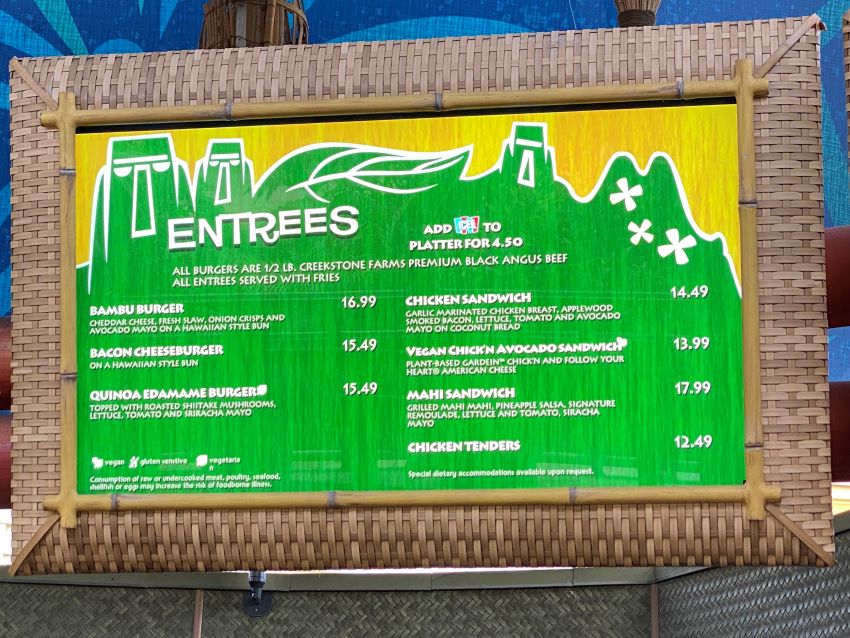
Food Prices Are High… But You Can Bring Your Own
Volcano Bay offers several restaurants around the park… and frankly, the food is high quality for a theme park. If you’re thinking of just a cheap hot dog on a paper plate, think again. Still, it’s not cheap. Expect to spend $20 a person for lunch. A bottle of soda runs about $5. A beer is more than $10. Feeding a family of four can be $100.
If you don’t want to drop that cash, there is good news. Universal allows guests to bring snacks and drinks into the park. There are a number of rules you’ll want to know about what you can and can’t bring. Still, if you want to save, it’s a must.
Flip Flops Are Ideal for the Park (Better Than Water Shoes)
Wondering what to wear on your feet at the park? We suggest flip-flops or some other sandals. Why not water shoes? You’ll find that some rides require you to take off any shoes you’re wearing (there is a spot to store them at the entrance of every ride). As well, if you’re going to be wearing shoes around the park all day, the extra air and drying allowed by a pair of flip flops is much better than enclosed water shoes.
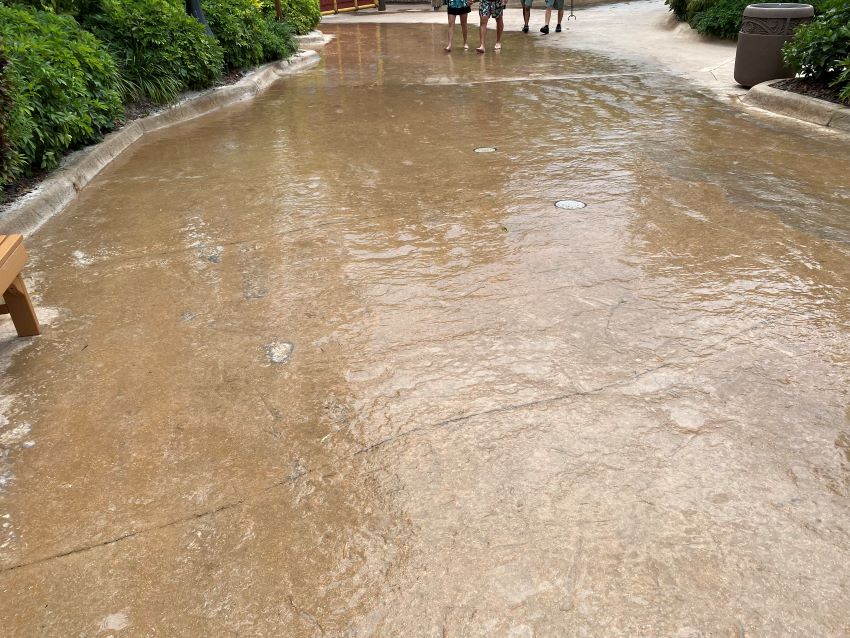
Barefoot? The Sidewalks Are Cooled
You’ll find that you may end up going barefoot around the park (many people do). In that case, you might be wondering about the sidewalk in the hot Florida sun on bare feet.
In a smart move, Volcano Bay has built in water sprayers throughout the park that spray onto the walkway. That cools down the concrete, making it comfortable to walk without shoes. Just know that if you go barefoot all day, the rough surface will make your feet hurt eventually.
The Most Popular Ride: The Aqua Coaster
If you get there early, the smart move is to get in queue for the Krakatau Aqua Coaster immediately. The ride, which puts you in an inflatable raft that shoots you up inclines and down drops is insanely fun… and the most popular ride in the park.
Even by the time we first visited at the opening on a weekday morning, the wait time was 55 minutes. While that seems like a long time, by the afternoon, the wait was 240 minutes (four hours!). Tap into the line early, go explore the park and then get your ride in early in the morning.
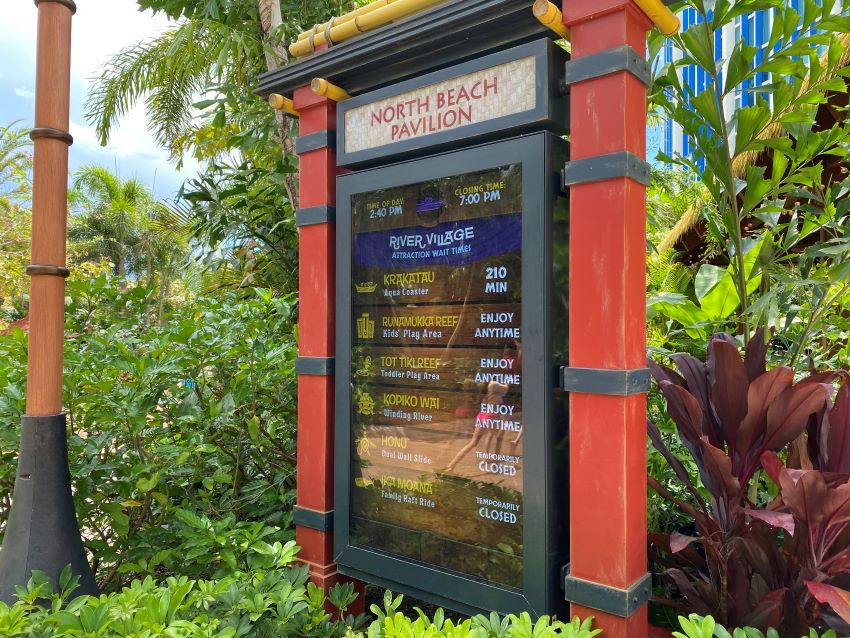
There Are Still Some Lines Despite the Virtual Line System
We are big fans of the Tapu Tapu virtual line system. You tap in, can go do other things and then come back when the device tells you it is time. That’s much better than waiting in a long line.
Still, don’t think it completely eliminates all lines. Once you are signaled to return for your spot, you’ll tap in at the entrance and then have to go wait your turn. In the case of the popular aqua coaster, that was about 15 minutes until it was out turn.
If you head to a ride that says “Ride Now” it could mean there is no wait, or just a few minutes before you get a turn.
Re-Entry Is Allowed at Volcano Bay
During the summer, Volcano Bay is open 10 hours (9:00 a.m. to 7 p.m.). That’s a long day at the park. But if you decide you need a break, know that you are allowed to exit and then come back into the park. You will just need to show a valid ticket for that day.
So if you want to visit in the morning, head back to the hotel for a few hours and then come back in the evening when the crowds are thinner, you can do that.
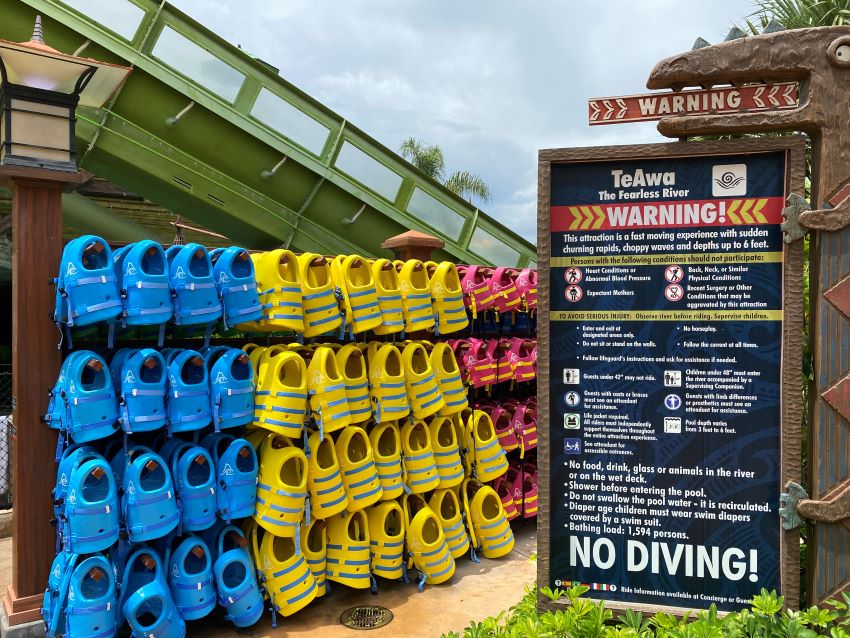
Life Jackets Are Available For Free Around the Park
Bringing someone who isn’t a strong swimmer? Know that there are free life jackets available all around the park. Simply head up and grab one. In fact, if you want to go to TeAwa The Fearless River (a fast-current river ride that loops around the park), you’re required to wear one no matter how well you swim.
Want the Most Extreme Ride? Head to the Volcano
There are plenty of fun and exhilarating rides in the park, but if you want the most extreme that Volcano Bay has to offer, then head to the top of Krakatau (the volcano). There, you’ll find three slides that feature drop floors that send you plunging down. They are by far the tallest rides in the park. You’ll likely not be able to see anything on your way down because of the water spray.
Skip the Universal Express PLUS Pass… Buy This Instead
Don’t like waiting in lines… even if they are virtual? Universal offers an Express Pass that allows you to skip the line on rides one time each. That means you can ride something you want to ride on your schedule. But, be careful for what you buy.
There are two passes sold. The traditional Express Pass is $20 per person. The Express PLUS Pass is $50 per person. The difference? The PLUS version lets you skip the line on any ride one time. The lower-priced version is for use only on select rides.
But in the fine print, those select rides include almost every ride in the park except for two — the body slides at the top of the volcano and the drop slides in the park. That’s the only difference.
When we went to the park the lines for these rides were relatively short (though there were some waits later in the day). We’d suggest the less-expensive pass if you buy any pass at all.
Plan to Spend Money
If there’s one thing we’d suggest anyone know before they visit Volcano Bay… admission is just the start of what you’ll spend. Between parking, lockers, express passes, food, and drink, there’s lots of opportunities to spend more. And the prices in the park are particularly high. For instance, we paid $16 to rent a locker for the day and $30 just to park.
We’d suggest budgeting about $100-$150 on what you’ll spend in the park even after you’ve bought tickets.
Is Volcano Bay Worth It?
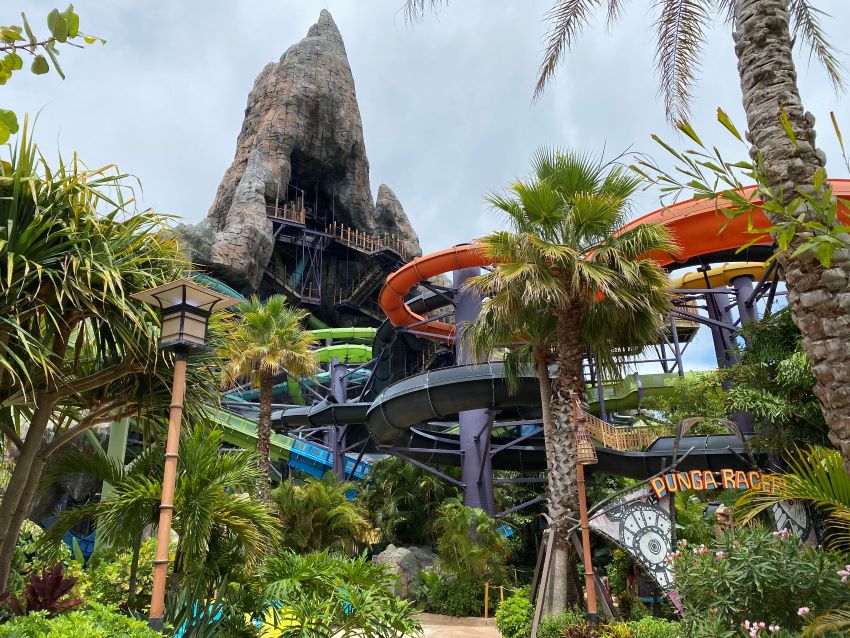
Given the cost of admission — and the money you’ll spend once in the park — you might wonder if Volcano Bay is worth the cost. There’s no doubt that it’s a major investment. A family of four visiting could easily spend $500 on their day… and in some cases considerably more. Plus, the park is considerably more than some other waterparks like SeaWorld’s Aquatica.
Having shelled out that money ourselves and spending the day at the park, we are happy to say that yes, Volcano Bay is worth the money.
For one, no expense was spared in the design of the park. It is smartly designed, from the water jets that spray to keep the sidewalk cool to the lush foliage that makes it feel more intimate to the Tapu Tapu device that allows for virtual lines. It seems that everything was thought of when the park was built.
But more importantly, the park is fun. Ridiculously fun. We took our son and from the first ride (the Maku Puihi Raft Ride), we’ve never seen him so excited. That went on all day.
We’ll admit to groaning about some of the prices around the park, but even after an entire day there was hardly anything we could find fault with. And even now, we’ve largely forgotten about the money we spent, but don’t forget anything about the experience.



